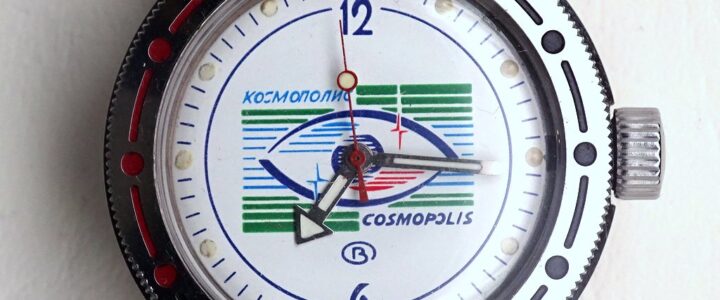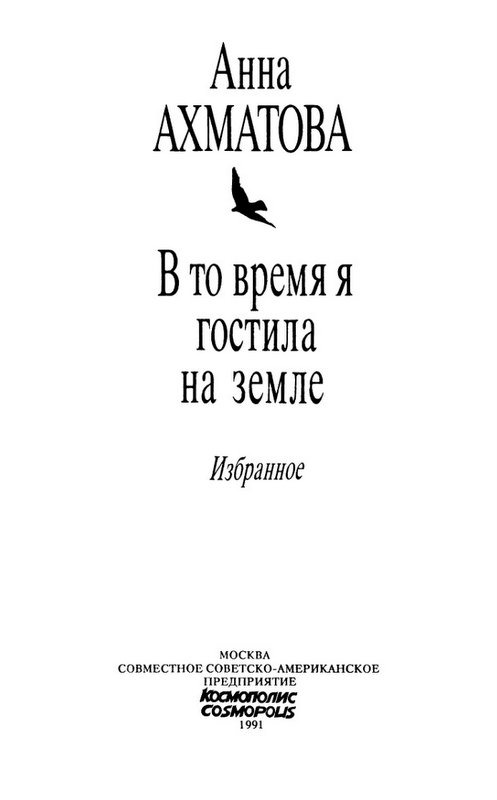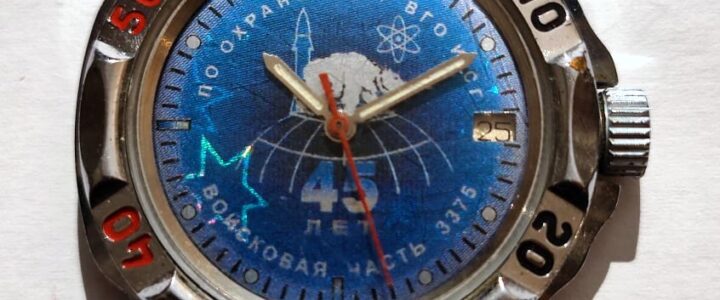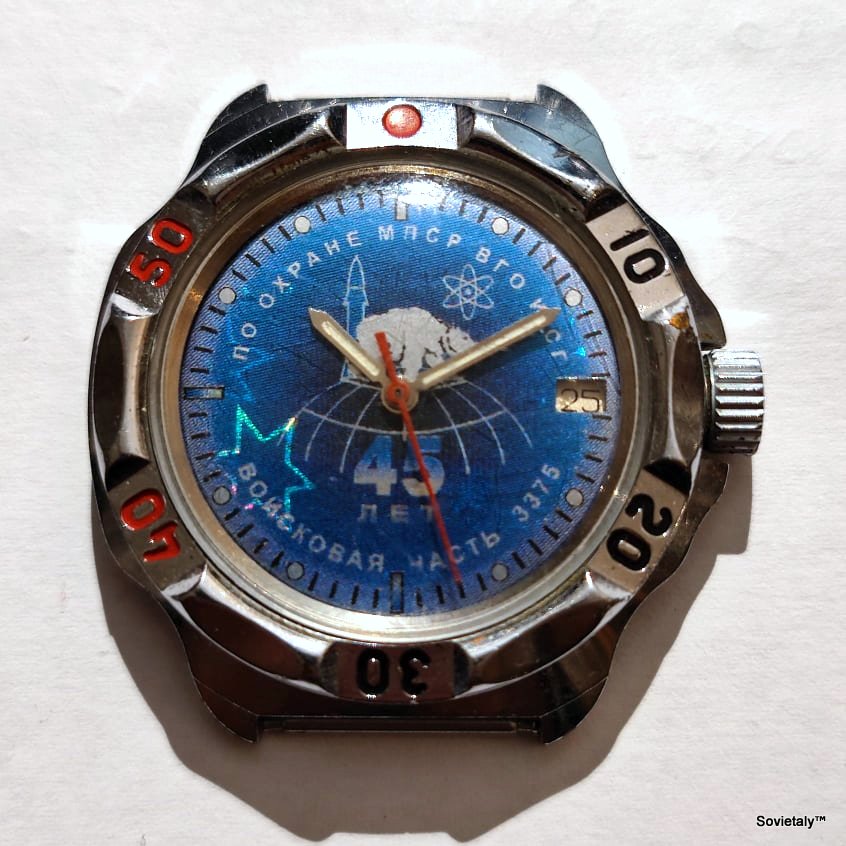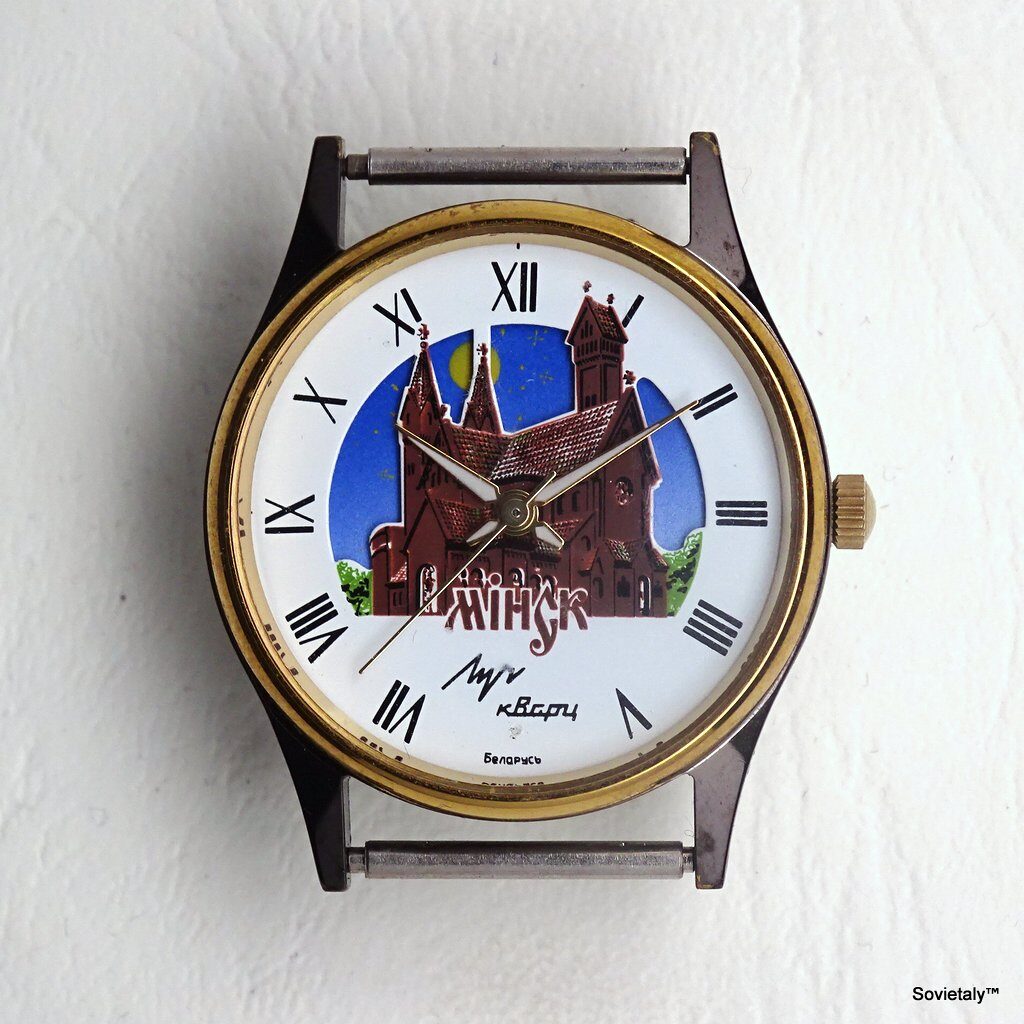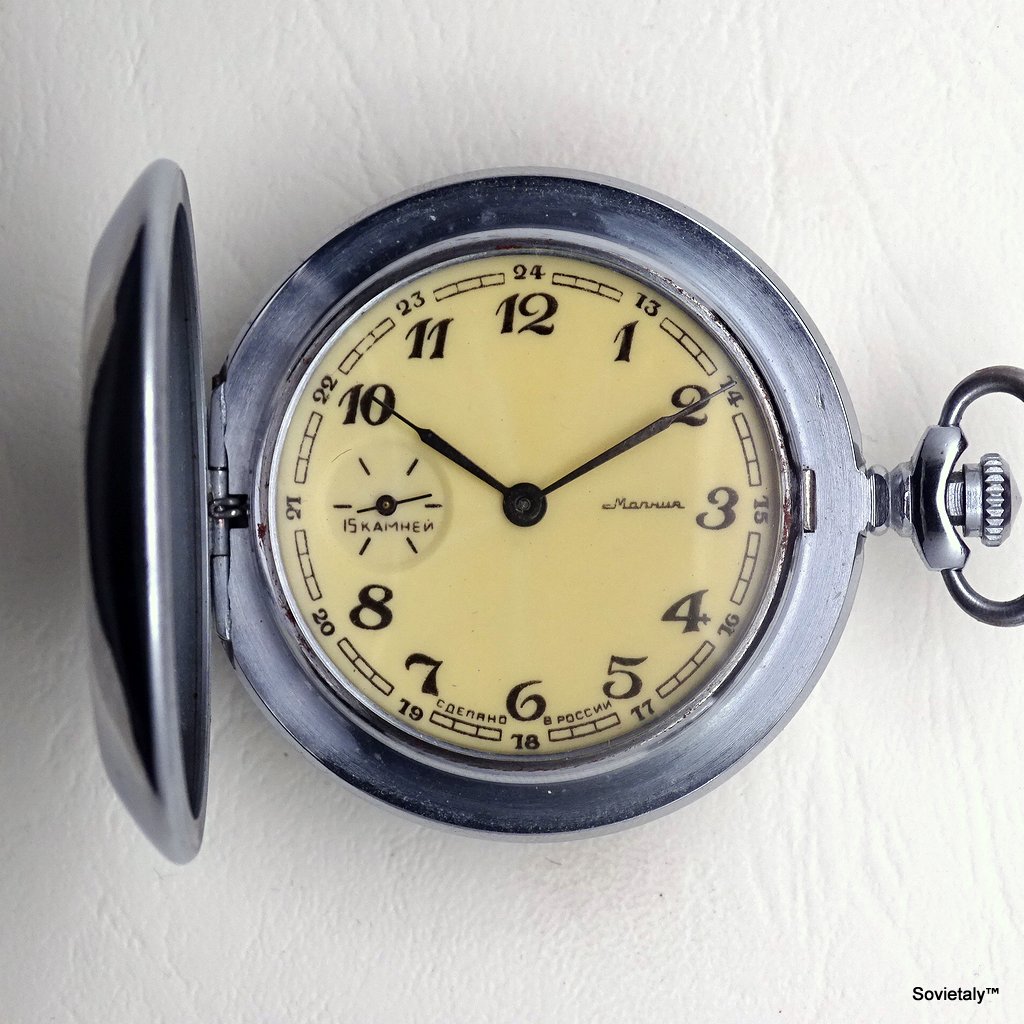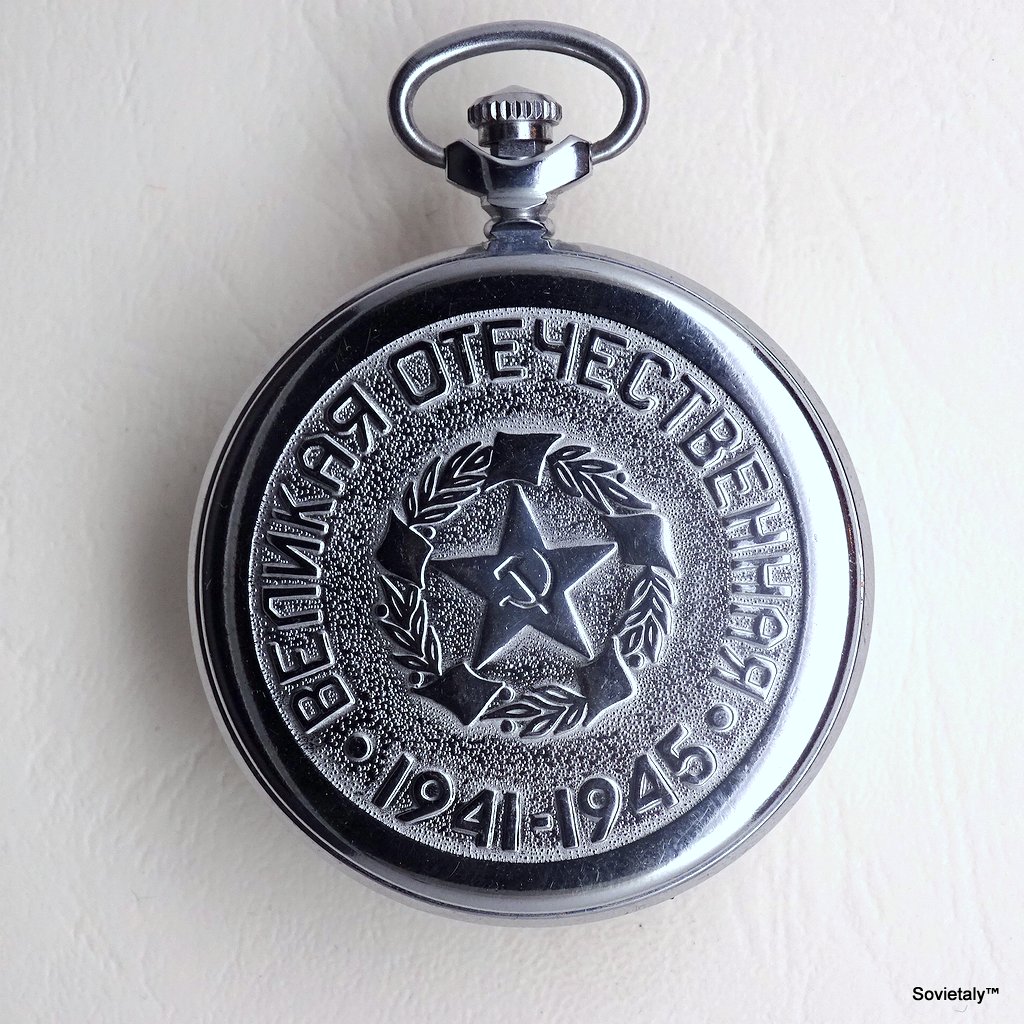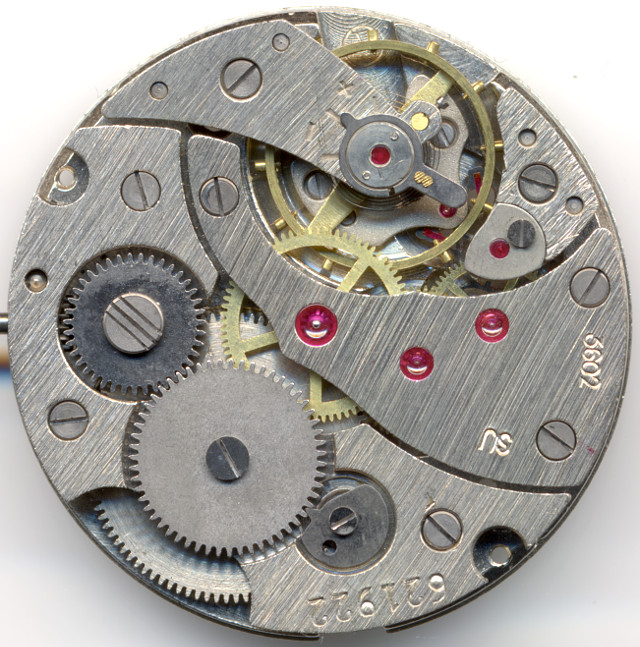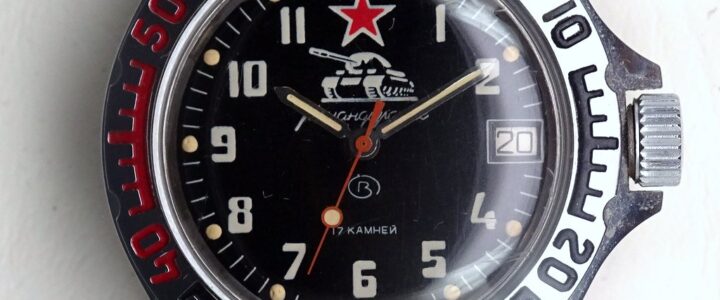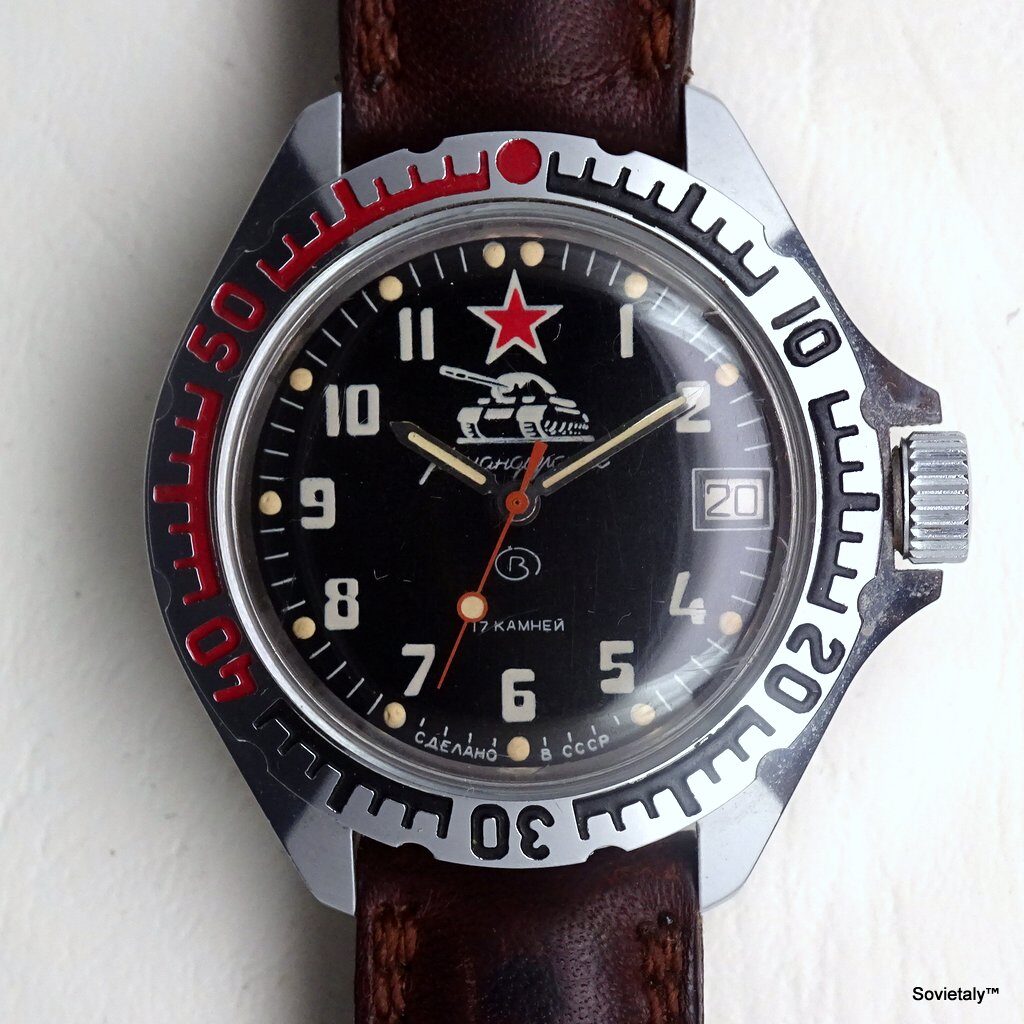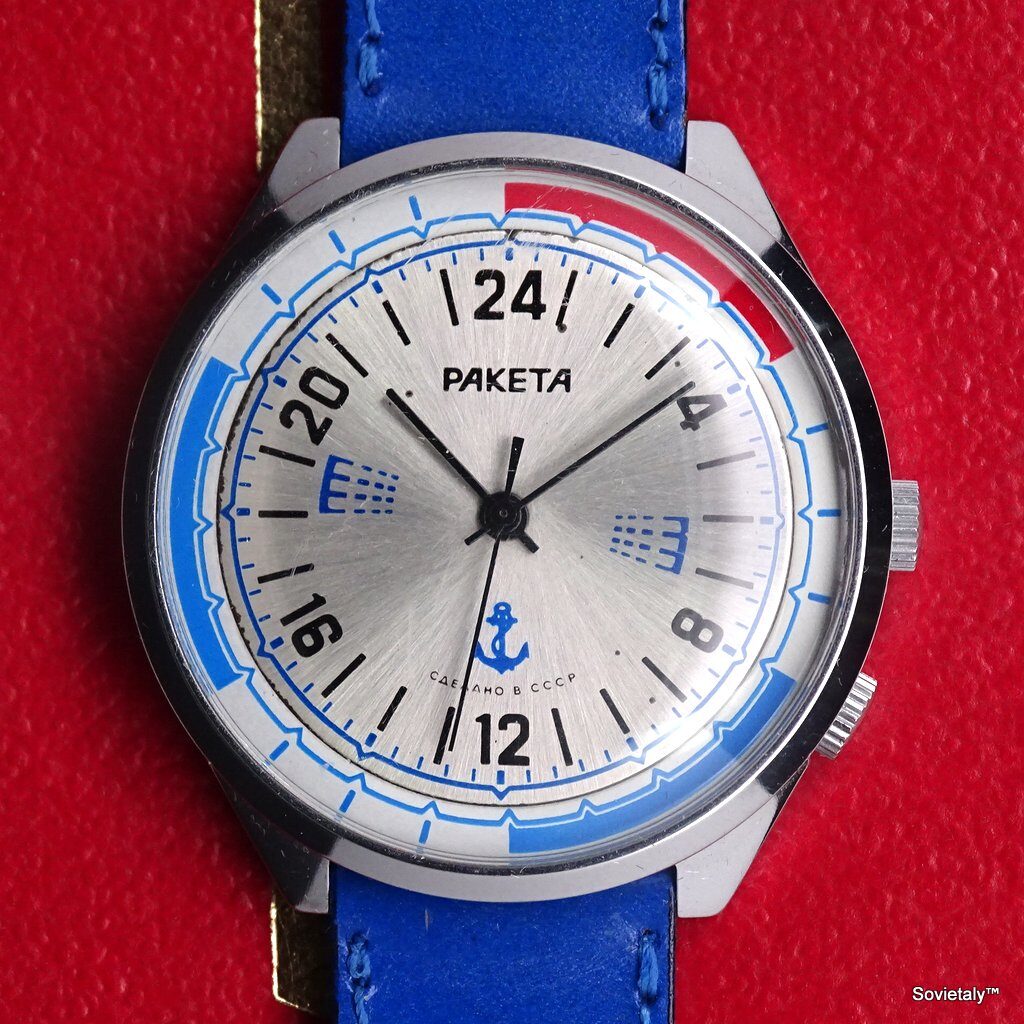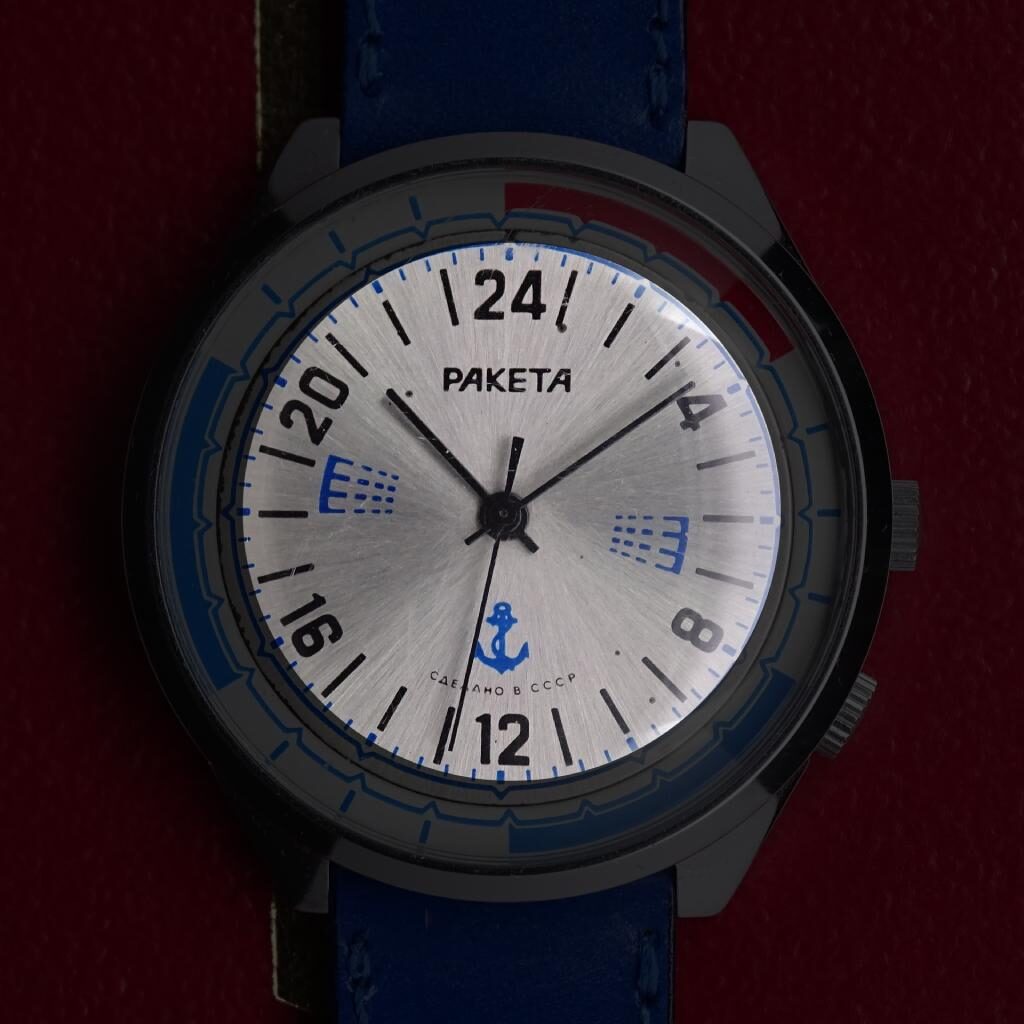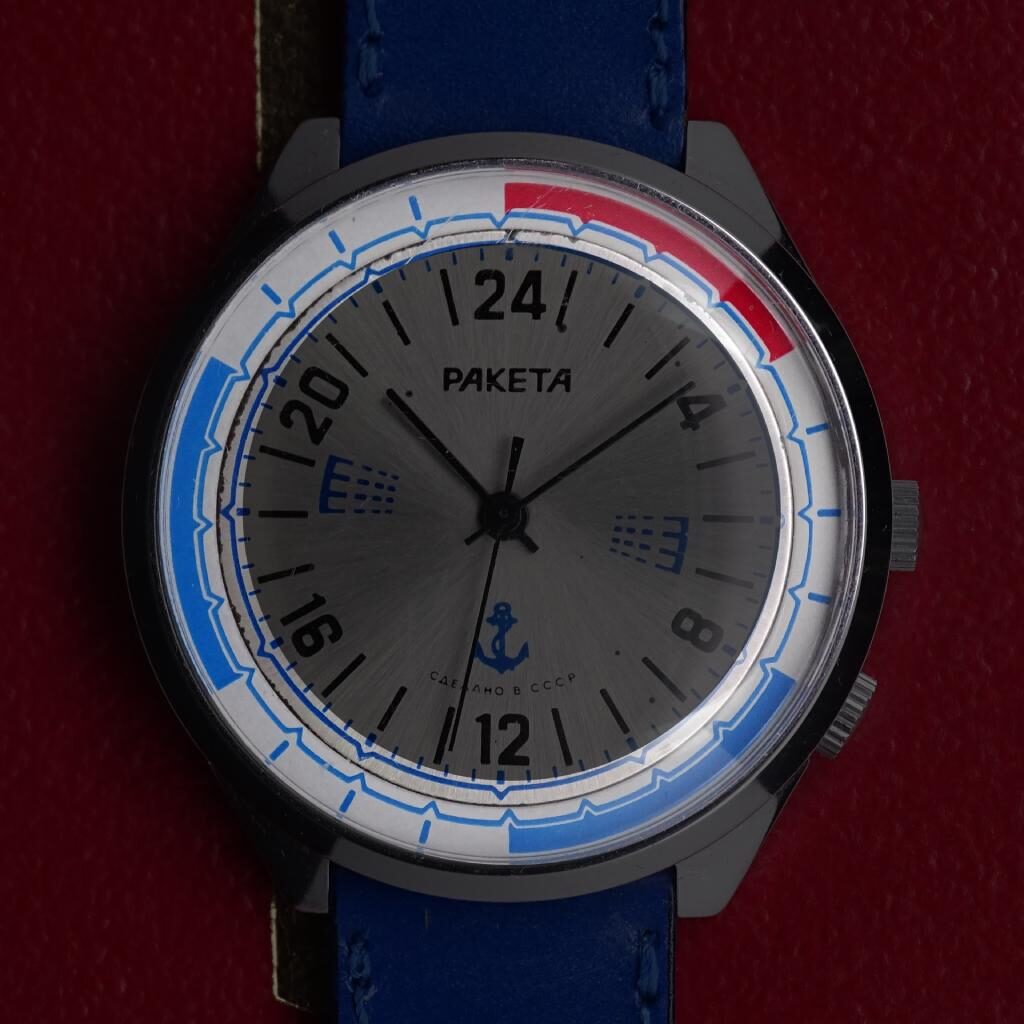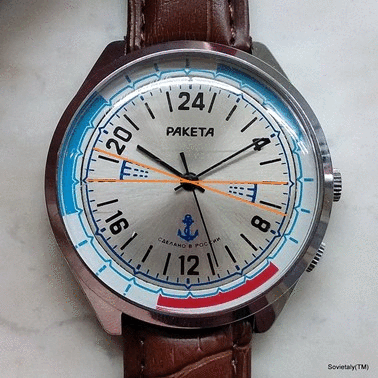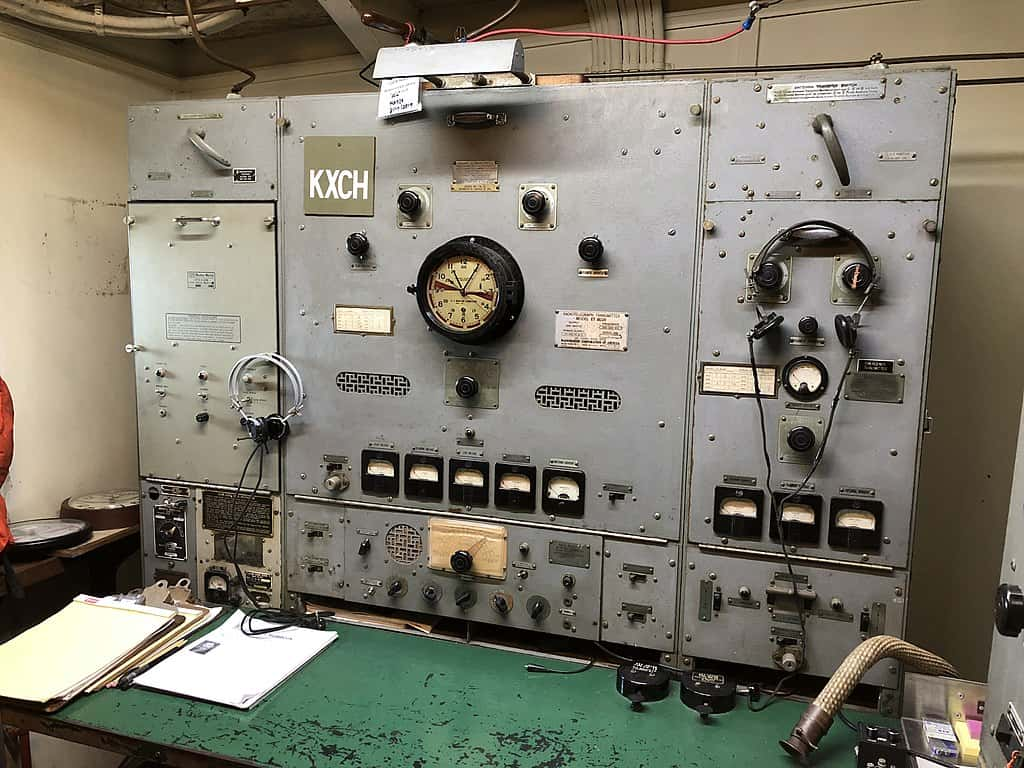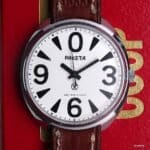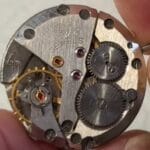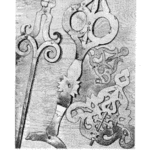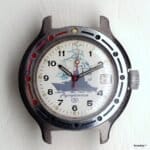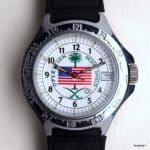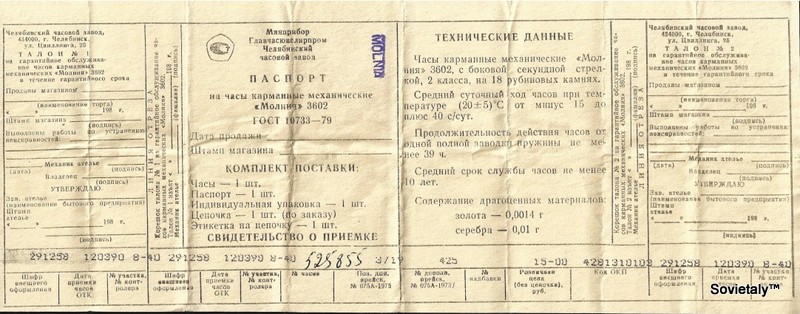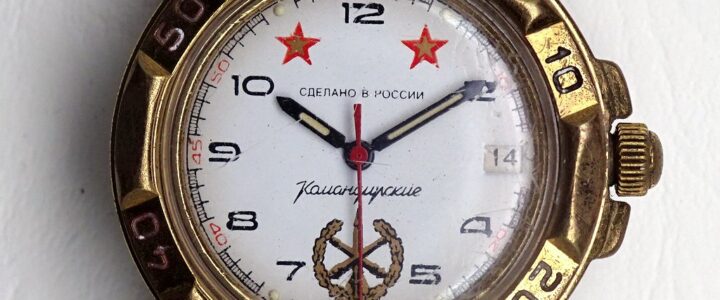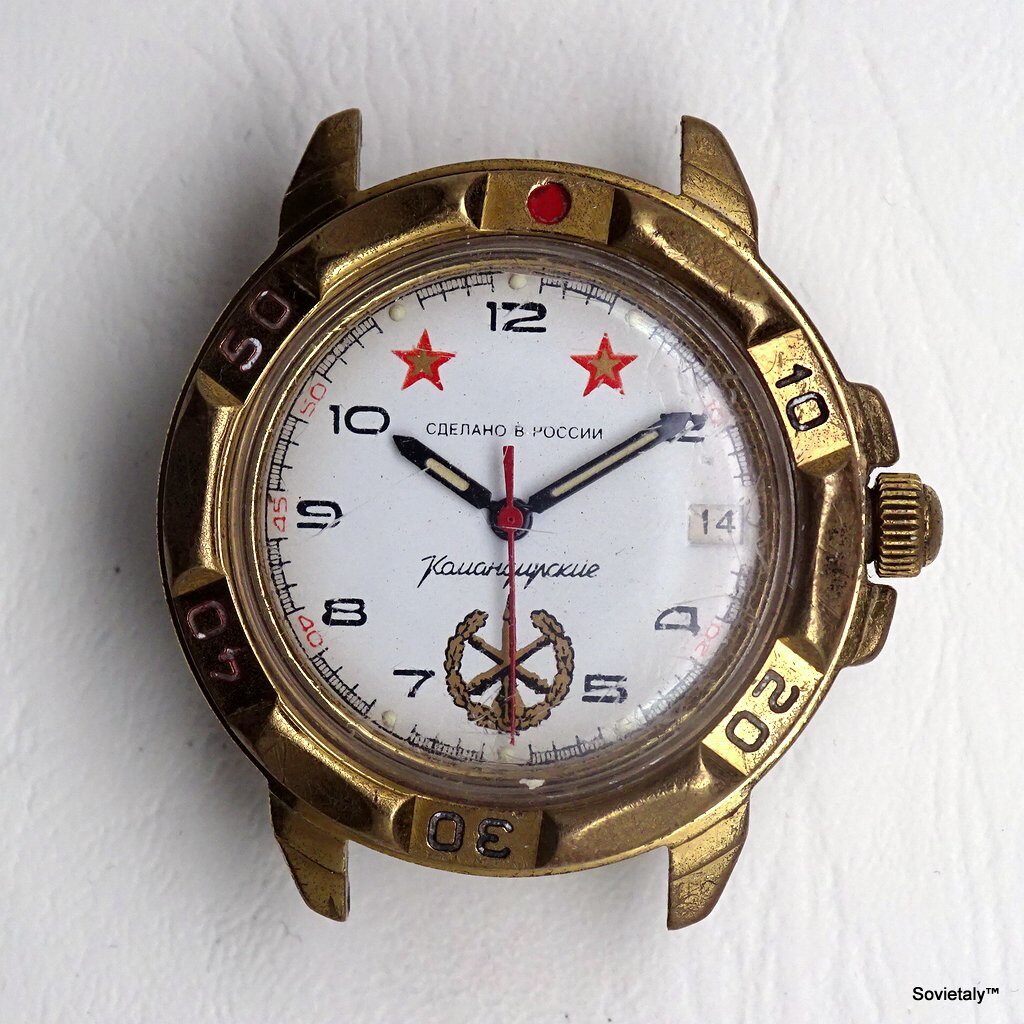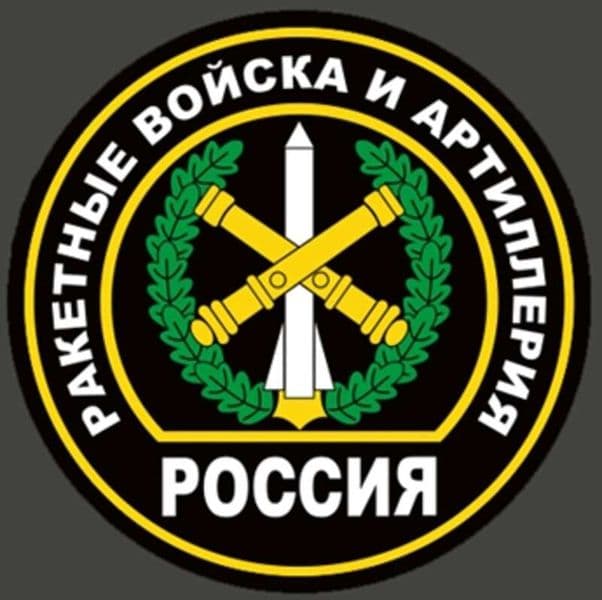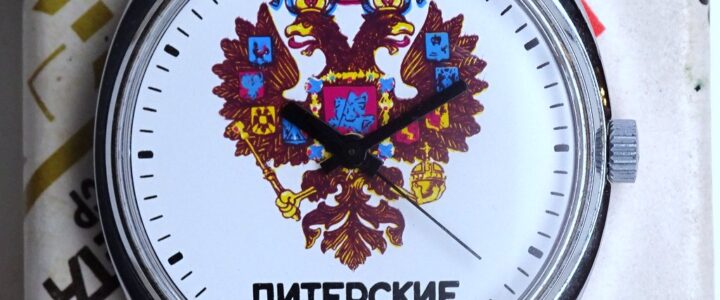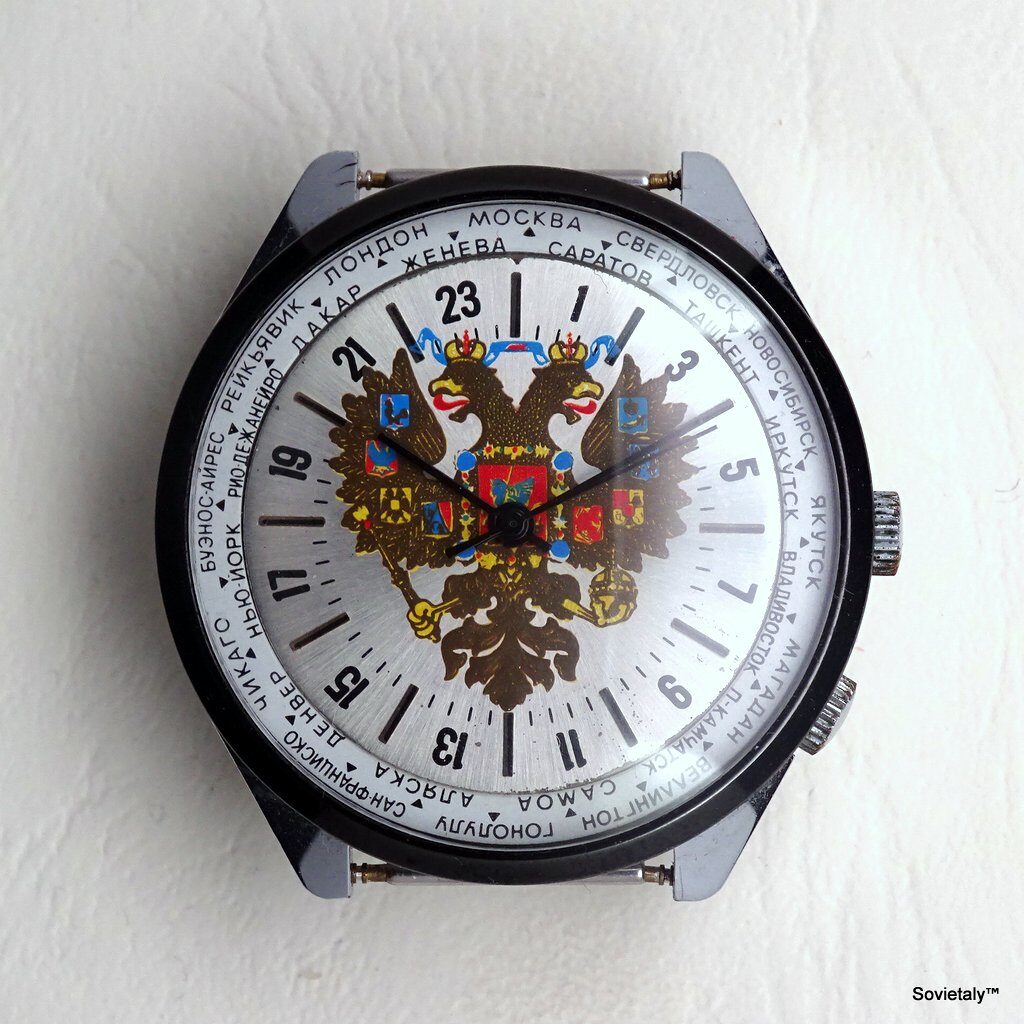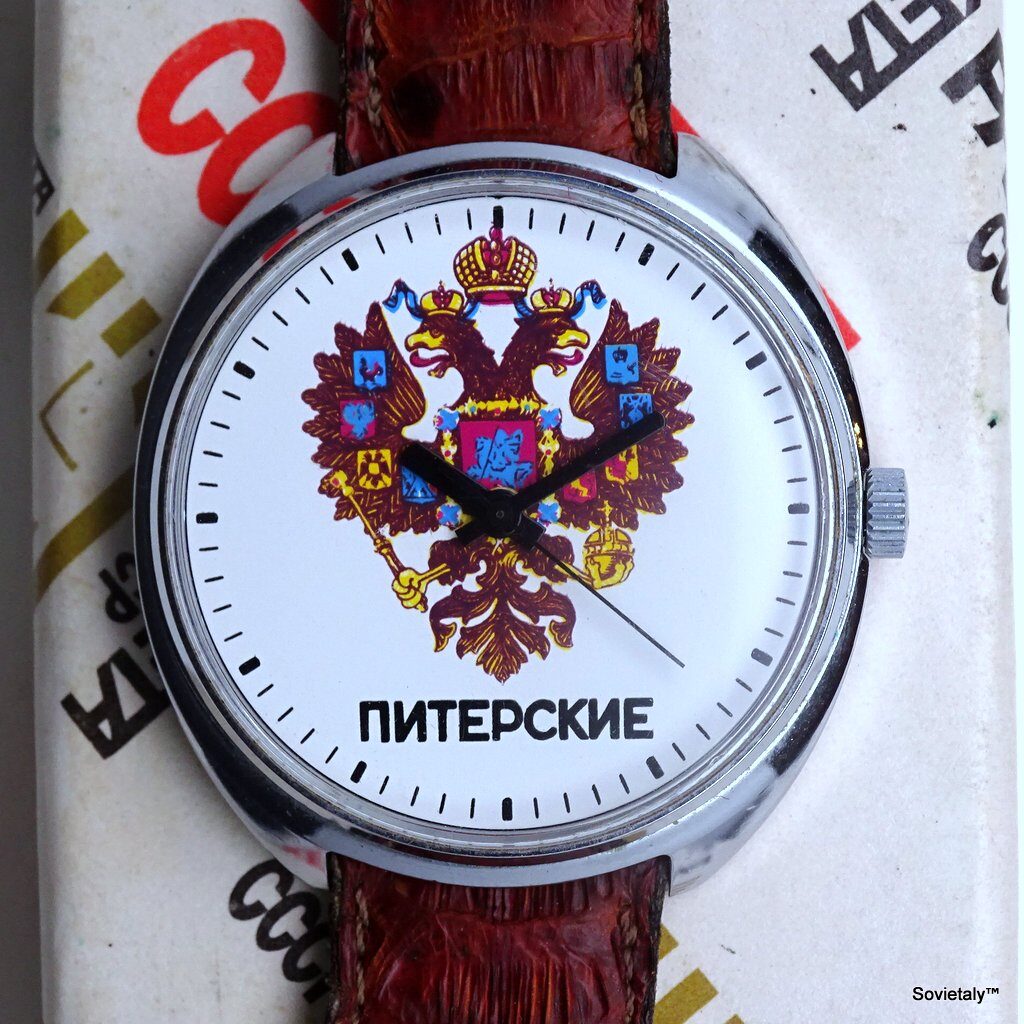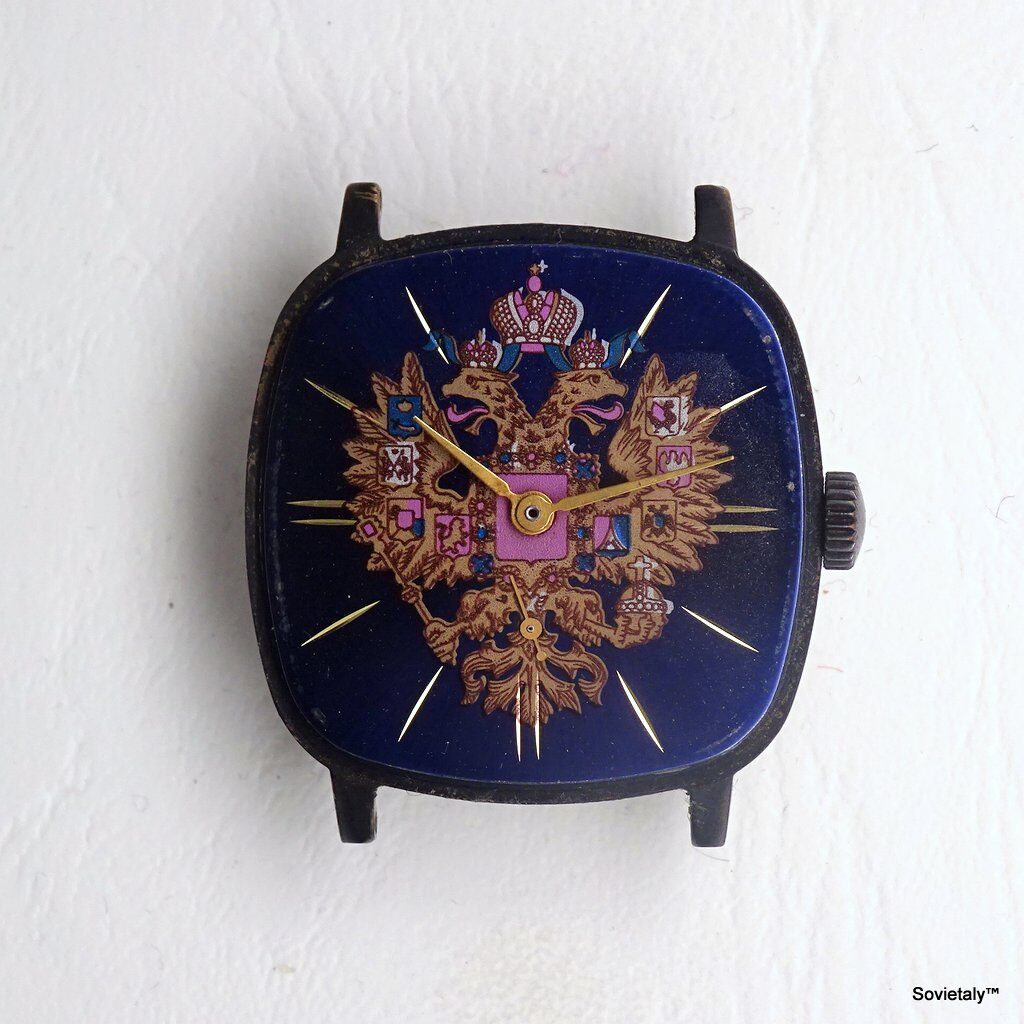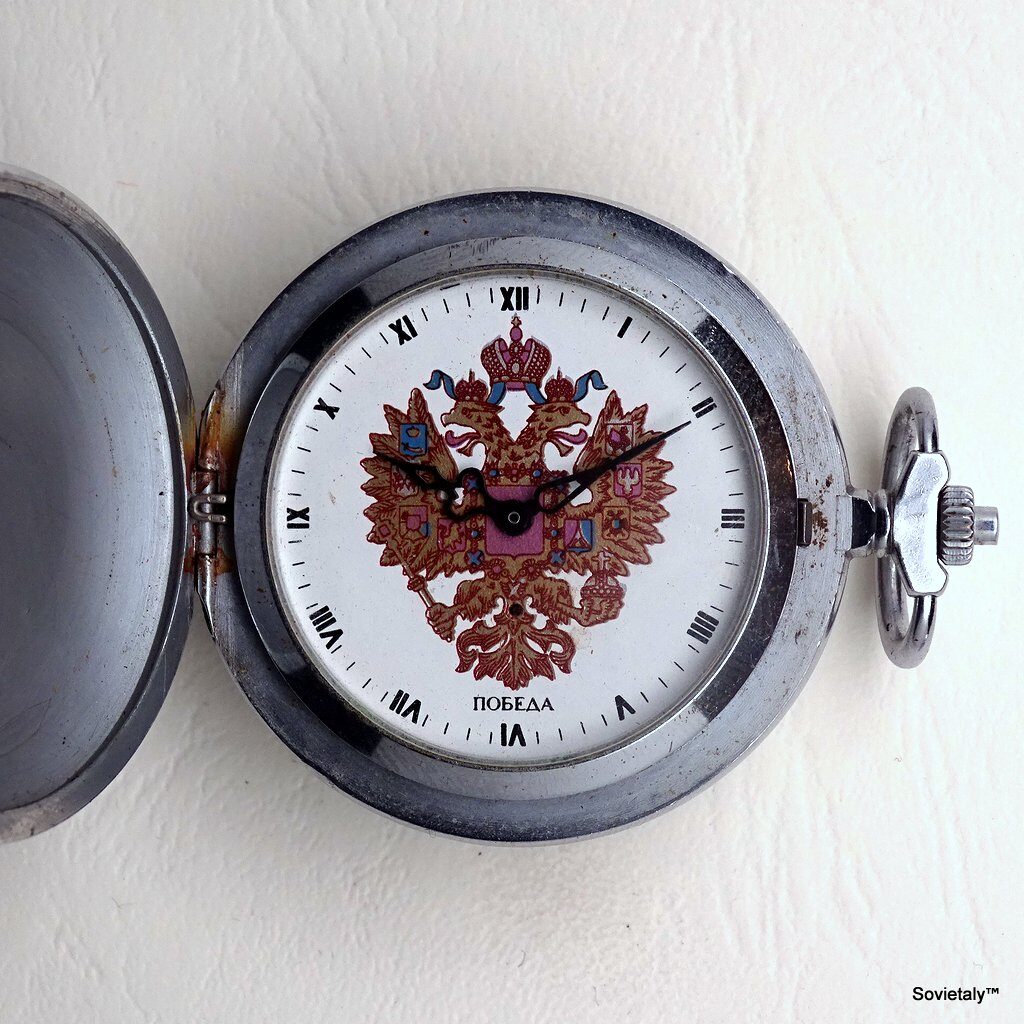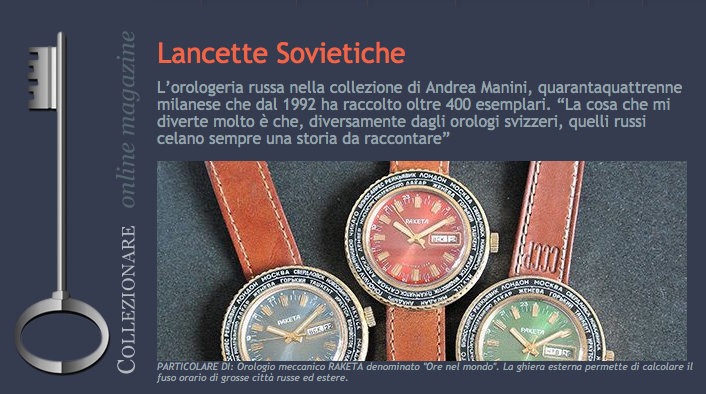Introduction
In the 1990s, during the political and economic transition from the Soviet Union to the Commonwealth of Independent States (CIS), the renowned watch company Poljot produced a series of commemorative watches. Among them, the Poljot Khrunichev Space Center watch stands out as a tribute to the importance of the Khrunichev Space Center in Russian aerospace history. This article will explore in detail the features of this watch, the caliber that powers it, and the crucial role of the Khrunichev Space Center.
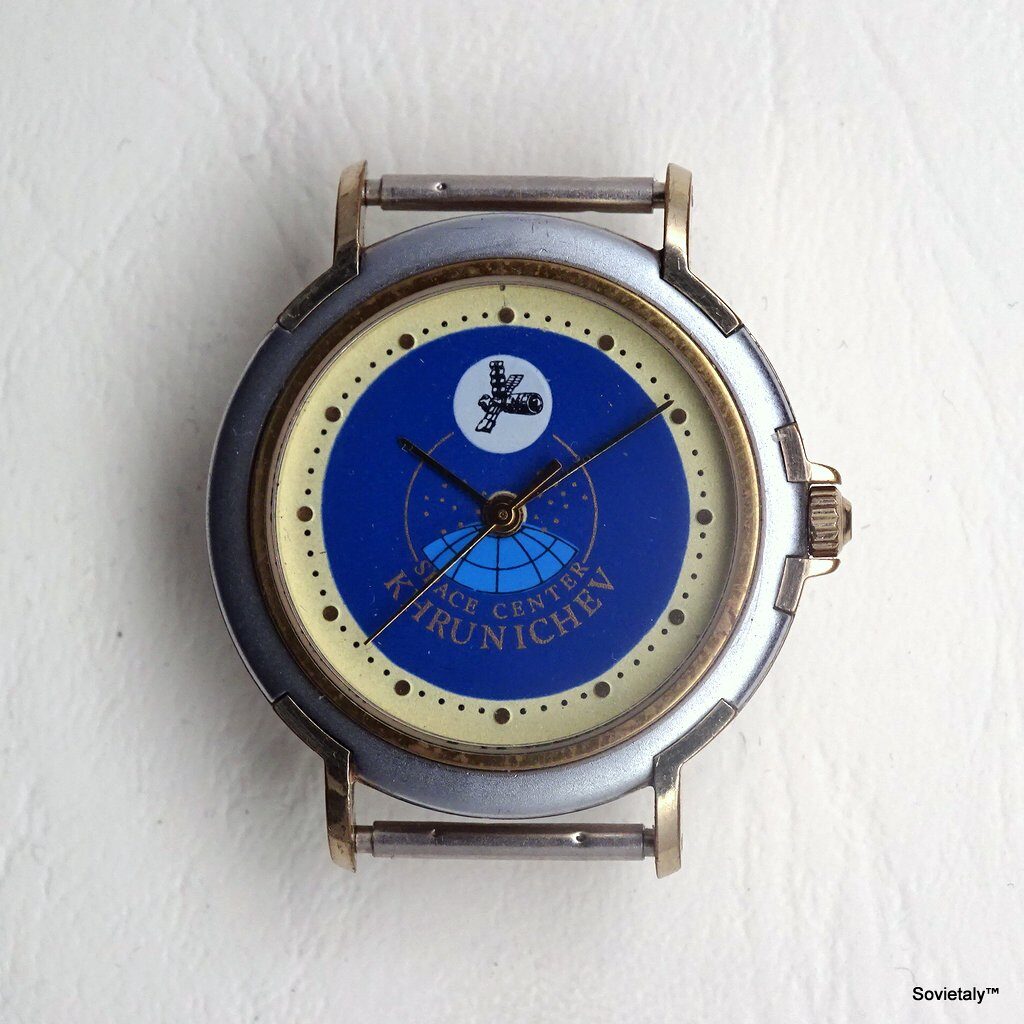
Watch Features
The Poljot Khrunichev Space Center watch is a perfect example of design and function, combining aesthetics and history in a single piece.
- Dial: The dial is dominated by a stylized representation of the Northern Hemisphere, complete with parallels and meridians, and an artistic representation of interstellar space with stylized stars. At the center of the dial, the MIR space station, active at the time of the watch’s production, is clearly depicted. The “SPACE CENTER KHRUNISHEV” inscription emphasizes the center’s international significance. The raised metal indices and gold-plated hands add a touch of elegance.
- Case: The round case is made of steel with a dual satin and gold finish, giving the watch a refined appearance. The bi-color dial, white and blue, creates a visually appealing contrast.
- Back: The back of the watch is simple, with an engraved serial number (118218). Signs of attempted battery replacement by inexperienced hands are visible.
The Caliber
The watch is powered by the Poljot quartz caliber, known for its simplicity and reliability. This movement uses an AG1 button battery and does not contain jewels, a choice reflecting cost-consciousness without compromising functionality. The movement is secured inside the case by a white plastic component, a common solution for watches of this period.
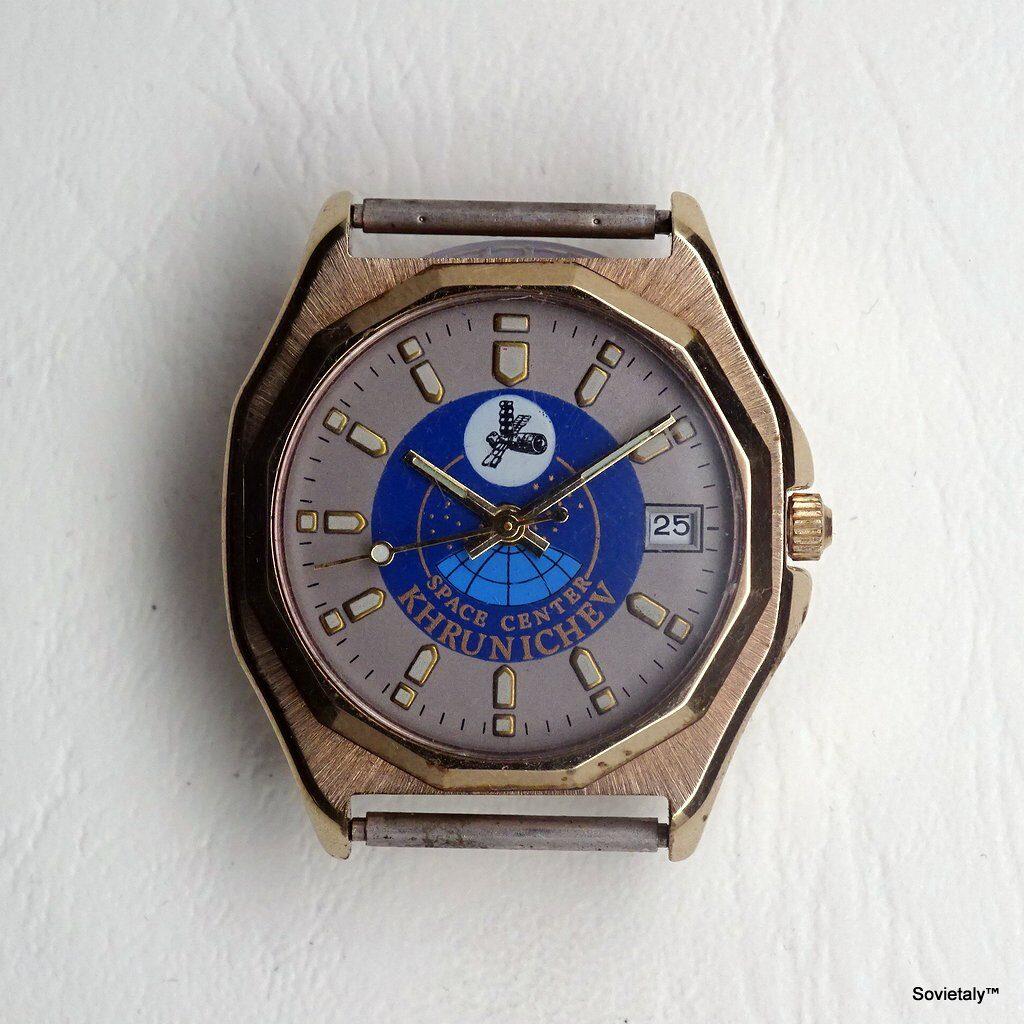
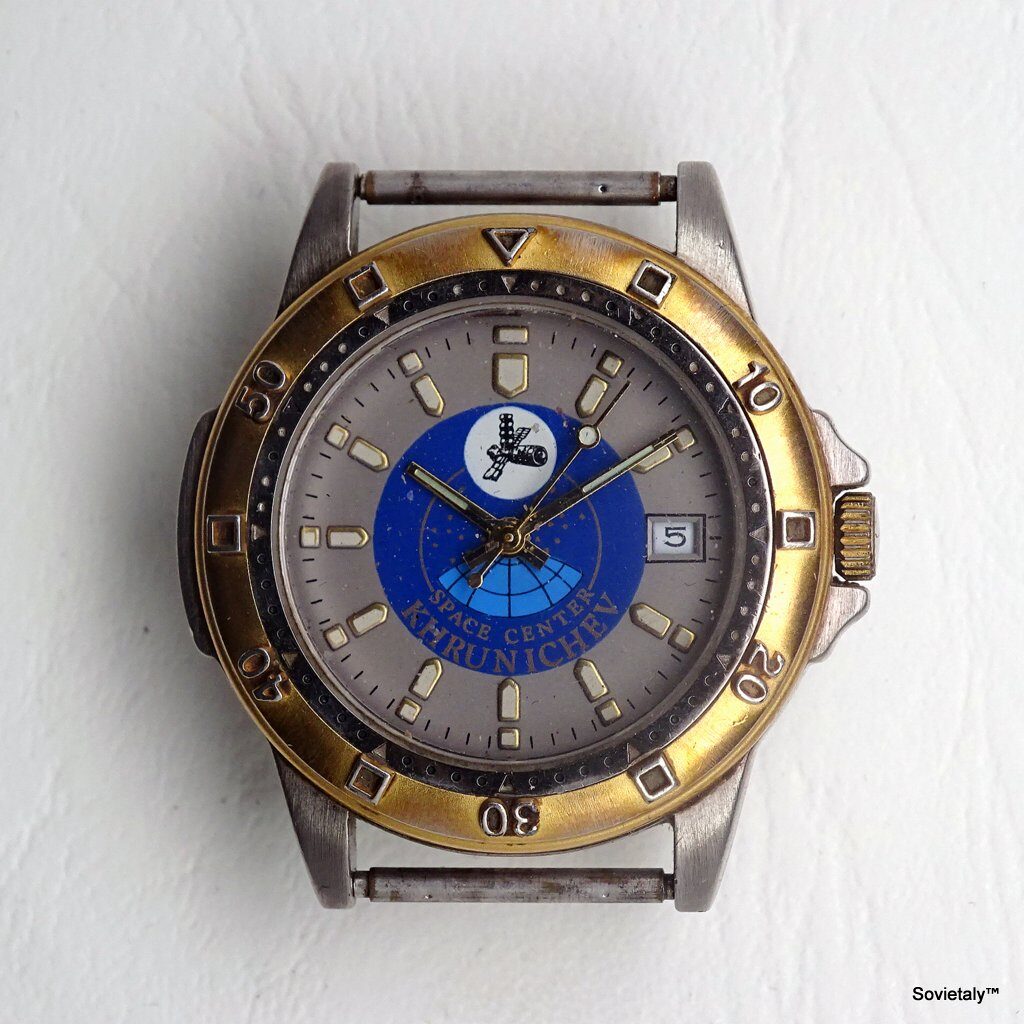
Khrunichev Space Center: A Beacon of Russian Space Technology
The Khrunichev Space Center, founded in 1916 near Moscow, is one of the most influential institutions in Russian space exploration history. Originally engaged in the production of “Russo-Baltique” automobiles, the company quickly evolved, significantly contributing to the production of military aircraft such as the Ilyushin Il-4 and Tupolev Tu-2 during World War II.
In the 1960s, the center expanded its scope to include the production of missiles and space modules, becoming a key player in the Soviet space era. Notable achievements include modules for the MIR, SALYUT, and the current ISS space stations, as well as the Proton rockets, still in use today.

Further Reading on the History and Productions of the Khrunichev Space Center
For those interested in delving deeper into the history and innovations of the Khrunichev Space Center, here are some useful links:
- History of the Khrunichev Space Center (in Russian)
- Official Roscosmos Website (in Russian)
- Timeline of the MIR Space Station (in Italian)
- ALMAZ Module (in Russian)
- SALYUT Space Station (in Russian)
- International Space Station (ISS) (in Italian)
- Proton Rocket (in Russian)
Collecting Russian Watches: A Valuable Addition
The Poljot Khrunichev Space Center watch is a gem for collectors of space-themed watches. Purchased for about €20, it represents not only a piece of mechanical precision but also a tribute to Russian space history. Despite some signs of use on the back, the watch is in good condition and offers an excellent combination of history and functionality.
Dating the Watch
The presence of the MIR station on the dial helps date the watch between 1992 and 1998. The MIR station, operational from 1986 to 2001, is a key indicator. The absence of references to the Soviet Union suggests a post-1992 production, while the launch of the ISS in 1998 marks the end of the production period for this specific model.
Conclusion
The Poljot Khrunichev Space Center watch is more than just a timepiece; it is a piece of history. For collectors, it represents a unique opportunity to own an item that celebrates the remarkable achievements of the Khrunichev Space Center and Russian space history. This watch is perfect for enriching any collection with a piece of technological and cultural history.


